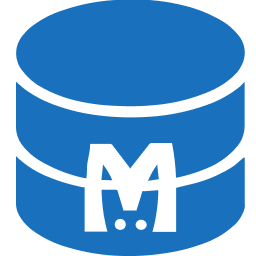You are looking at the documentation of a prior release. To read the documentation of the latest release, please
visit here.
Backup and Restore MariaDB database using KubeStash
KubeStash allows you to backup and restore MariaDB databases. It supports backups for MariaDB instances running in Standalone, and Galera cluster configurations. KubeStash makes managing your MariaDB backups and restorations more straightforward and efficient.
This guide will give you an overview how you can take backup and restore your MariaDB databases using Kubestash.
Before You Begin
- At first, you need to have a Kubernetes cluster, and the
kubectlcommand-line tool must be configured to communicate with your cluster. If you do not already have a cluster, you can create one by usingMinikubeorKind. - Install
KubeDBin your cluster following the steps here. - Install
KubeStashin your cluster following the steps here. - Install KubeStash
kubectlplugin following the steps here. - If you are not familiar with how KubeStash backup and restore MariaDB databases, please check the following guide here.
You should be familiar with the following KubeStash concepts:
To keep everything isolated, we are going to use a separate namespace called demo throughout this tutorial.
$ kubectl create ns demo
namespace/demo created
Note: YAML files used in this tutorial are stored in docs/guides/mariadb/backup/kubestash/logical/examples directory of kubedb/docs repository.
Backup MariaDB
KubeStash supports backups for MariaDB instances across different configurations, including Standalone and Galera Cluster setups. In this demonstration, we’ll focus on a MariaDB database using Galera cluster configuration. The backup and restore process is similar for Standalone configuration.
This section will demonstrate how to backup a MariaDB database. Here, we are going to deploy a MariaDB database using KubeDB. Then, we are going to backup this database into a GCS bucket. Finally, we are going to restore the backup up data into another MariaDB database.
Deploy Sample MariaDB Database
Let’s deploy a sample MariaDB database and insert some data into it.
Create MariaDB CR:
Below is the YAML of a sample MariaDB CR that we are going to create for this tutorial:
apiVersion: kubedb.com/v1
kind: MariaDB
metadata:
name: sample-mariadb
namespace: demo
spec:
version: 11.1.3
replicas: 3
storageType: Durable
storage:
accessModes:
- ReadWriteOnce
resources:
requests:
storage: 1Gi
deletionPolicy: WipeOut
Create the above MariaDB CR,
$ kubectl apply -f https://github.com/kubedb/docs/raw/v2024.11.8-rc.0/docs/guides/mariadb/backup/kubestash/logical/examples/sample-mariadb.yaml
mariadb.kubedb.com/sample-mariadb created
KubeDB will deploy a MariaDB database according to the above specification. It will also create the necessary Secrets and Services to access the database.
Let’s check if the database is ready to use,
$ kubectl get md -n demo sample-mariadb
NAME VERSION STATUS AGE
mariadb.kubedb.com/sample-mariadb 11.1.3 Ready 5m4s
The database is Ready. Verify that KubeDB has created a Secret and a Service for this database using the following commands,
$ kubectl get secret -n demo
NAME TYPE DATA AGE
sample-mariadb-auth kubernetes.io/basic-auth 2 5m49s
$ kubectl get service -n demo -l=app.kubernetes.io/instance=sample-mariadb
NAME TYPE CLUSTER-IP EXTERNAL-IP PORT(S) AGE
sample-mariadb ClusterIP 10.128.7.155 <none> 3306/TCP 6m28s
sample-mariadb-pods ClusterIP None <none> 3306/TCP 6m28s
Here, we have to use service sample-mariadb and secret sample-mariadb-auth to connect with the database. KubeDB creates an AppBinding CR that holds the necessary information to connect with the database.
Verify AppBinding:
Verify that the AppBinding has been created successfully using the following command,
$ kubectl get appbindings -n demo
NAME TYPE VERSION AGE
sample-mariadb kubedb.com/mariadb 11.1.3 7m56s
Let’s check the YAML of the above AppBinding,
$ kubectl get appbindings -n demo sample-mariadb -o yaml
apiVersion: appcatalog.appscode.com/v1alpha1
kind: AppBinding
metadata:
annotations:
kubectl.kubernetes.io/last-applied-configuration: |
{"apiVersion":"kubedb.com/v1","kind":"MariaDB","metadata":{"annotations":{},"name":"sample-mariadb","namespace":"demo"},"spec":{"deletionPolicy":"WipeOut","replicas":3,"storage":{"accessModes":["ReadWriteOnce"],"resources":{"requests":{"storage":"1Gi"}}},"storageType":"Durable","version":"11.1.3"}}
creationTimestamp: "2024-09-17T10:07:37Z"
generation: 1
labels:
app.kubernetes.io/component: database
app.kubernetes.io/instance: sample-mariadb
app.kubernetes.io/managed-by: kubedb.com
app.kubernetes.io/name: mariadbs.kubedb.com
name: sample-mariadb
namespace: demo
ownerReferences:
- apiVersion: kubedb.com/v1
blockOwnerDeletion: true
controller: true
kind: MariaDB
name: sample-mariadb
uid: c19117ca-582b-4d6c-90e5-ac80d5cf95b9
resourceVersion: "1561857"
uid: fd3868ef-f54b-4cc9-87b0-4986d9a8aaf0
spec:
appRef:
apiGroup: kubedb.com
kind: MariaDB
name: sample-mariadb
namespace: demo
clientConfig:
service:
name: sample-mariadb
port: 3306
scheme: tcp
url: tcp(sample-mariadb.demo.svc:3306)/
parameters:
address: gcomm://sample-mariadb-0.sample-mariadb-pods.demo,sample-mariadb-1.sample-mariadb-pods.demo,sample-mariadb-2.sample-mariadb-pods.demo
apiVersion: config.kubedb.com/v1alpha1
group: sample-mariadb
kind: GaleraArbitratorConfiguration
sstMethod: xtrabackup-v2
stash:
addon:
backupTask:
name: mariadb-backup-10.5.8
restoreTask:
name: mariadb-restore-10.5.8
secret:
name: sample-mariadb-auth
type: kubedb.com/mariadb
version: 11.1.3
KubeStash uses the AppBinding CR to connect with the target database. It requires the following two fields to set in AppBinding’s .spec section.
Here,
.spec.clientConfig.service.namespecifies the name of the Service that connects to the database..spec.secretspecifies the name of the Secret that holds necessary credentials to access the database..spec.typespecifies the types of the app that this AppBinding is pointing to. KubeDB generated AppBinding follows the following format:<app group>/<app resource type>.
Insert Sample Data:
Now, we are going to exec into one of the database pod and create some sample data. At first, find out the database Pod using the following command,
$ kubectl get pods -n demo --selector="app.kubernetes.io/instance=sample-mariadb"
NAME READY STATUS RESTARTS AGE
sample-mariadb-0 2/2 Running 0 10m
sample-mariadb-1 2/2 Running 0 10m
sample-mariadb-2 2/2 Running 0 10m
Now, let’s exec into the pod and create a table,
$ kubectl exec -it -n demo mariadb-0 -- bash
bash-4.4$ mariadb -uroot -p$MYSQL_ROOT_PASSWORD
MariaDB> create database hello;
MariaDB> use hello;
MariaDB [hello]> CREATE TABLE `demo_table`(
-> `id` BIGINT(20) NOT NULL,
-> `name` VARCHAR(255) DEFAULT NULL,
-> PRIMARY KEY (`id`)
-> );
MariaDB [hello]> INSERT INTO `demo_table` (`id`, `name`)
-> VALUES
-> (1, 'John'),
-> (2, 'Jane'),
-> (3, 'Bob'),
-> (4, 'Alice'),
-> (5, 'Charlie'),
-> (6, 'Diana'),
-> (7, 'Eve'),
-> (8, 'Frank'),
-> (9, 'Grace'),
-> (10, 'Henry');
MariaDB [hello]> select count(*) from demo_table;
+----------+
| count(*) |
+----------+
| 10 |
+----------+
Now, we are ready to backup the database.
Prepare Backend
We are going to store our backup data into a GCS bucket. We have to create a Secret with necessary credentials and a BackupStorage CR to use this backend. If you want to use a different backend, please read the respective backend configuration doc from here.
Create Secret:
Let’s create a secret called gcs-secret with access credentials to our desired GCS bucket,
$ echo -n '<your-project-id>' > GOOGLE_PROJECT_ID
$ cat /path/to/downloaded-sa-key.json > GOOGLE_SERVICE_ACCOUNT_JSON_KEY
$ kubectl create secret generic -n demo gcs-secret \
--from-file=./GOOGLE_PROJECT_ID \
--from-file=./GOOGLE_SERVICE_ACCOUNT_JSON_KEY
secret/gcs-secret created
Create BackupStorage:
Now, create a BackupStorage using this secret. Below is the YAML of BackupStorage CR we are going to create,
apiVersion: storage.kubestash.com/v1alpha1
kind: BackupStorage
metadata:
name: gcs-storage
namespace: demo
spec:
storage:
provider: gcs
gcs:
bucket: kubestash-qa
prefix: demo
secretName: gcs-secret
usagePolicy:
allowedNamespaces:
from: All
default: true
deletionPolicy: Delete
Let’s create the BackupStorage we have shown above,
$ kubectl apply -f https://github.com/kubedb/docs/raw/v2024.11.8-rc.0/docs/guides/mariadb/backup/kubestash/logical/examples/backupstorage.yaml
backupstorage.storage.kubestash.com/gcs-storage created
Now, we are ready to backup our database to our desired backend.
Create RetentionPolicy:
Now, let’s create a RetentionPolicy to specify how the old Snapshots should be cleaned up.
Below is the YAML of the RetentionPolicy object that we are going to create,
apiVersion: storage.kubestash.com/v1alpha1
kind: RetentionPolicy
metadata:
name: demo-retention
namespace: demo
spec:
default: true
failedSnapshots:
last: 2
maxRetentionPeriod: 2mo
successfulSnapshots:
last: 5
usagePolicy:
allowedNamespaces:
from: All
Let’s create the above RetentionPolicy,
$ kubectl apply -f https://github.com/kubedb/docs/raw/v2024.11.8-rc.0/docs/guides/mariadb/backup/kubestash/logical/examples/retentionpolicy.yaml
retentionpolicy.storage.kubestash.com/demo-retention created
Backup
We have to create a BackupConfiguration targeting respective sample-mariadb MariaDB database. Then, KubeStash will create a CronJob for each session to take periodic backup of that database.
At first, we need to create a secret with a Restic password for backup data encryption.
Create Secret:
Let’s create a secret called encrypt-secret with the Restic password,
$ echo -n 'changeit' > RESTIC_PASSWORD
$ kubectl create secret generic -n demo encrypt-secret \
--from-file=./RESTIC_PASSWORD \
secret "encrypt-secret" created
Below is the YAML for BackupConfiguration CR to backup the sample-mariadb database that we have deployed earlier,
apiVersion: core.kubestash.com/v1alpha1
kind: BackupConfiguration
metadata:
name: sample-mariadb-backup
namespace: demo
spec:
target:
apiGroup: kubedb.com
kind: MariaDB
namespace: demo
name: sample-mariadb
backends:
- name: gcs-backend
storageRef:
namespace: demo
name: gcs-storage
retentionPolicy:
name: demo-retention
namespace: demo
sessions:
- name: frequent-backup
scheduler:
schedule: "*/5 * * * *"
jobTemplate:
backoffLimit: 1
repositories:
- name: gcs-mariadb-repo
backend: gcs-backend
directory: /mariadb
encryptionSecret:
name: encrypt-secret
namespace: demo
addon:
name: mariadb-addon
tasks:
- name: logical-backup
.spec.sessions[*].schedulespecifies that we want to backup the database at5 minutesinterval..spec.targetrefers to the targetedsample-mariadbMariaDB database that we created earlier.
Let’s create the BackupConfiguration CR that we have shown above,
$ kubectl apply -f https://github.com/kubedb/docs/raw/v2024.11.8-rc.0/docs/guides/mariadb/kubestash/logical/examples/backupconfiguration.yaml
backupconfiguration.core.kubestash.com/sample-mariadb-backup created
Verify Backup Setup Successful
If everything goes well, the phase of the BackupConfiguration should be Ready. The Ready phase indicates that the backup setup is successful. Let’s verify the Phase of the BackupConfiguration,
$ kubectl get backupconfiguration -n demo
NAME PHASE PAUSED AGE
sample-mariadb-backup Ready 2m50s
Additionally, we can verify that the Repository specified in the BackupConfiguration has been created using the following command,
$ kubectl get repo -n demo
NAME INTEGRITY SNAPSHOT-COUNT SIZE PHASE LAST-SUCCESSFUL-BACKUP AGE
gcs-mariadb-repo true 1 1.096 KiB Ready 3m3s 3m13s
KubeStash keeps the backup for Repository YAMLs. If we navigate to the GCS bucket, we will see the Repository YAML stored in the demo/mariadb directory.
Verify CronJob:
It will also create a CronJob with the schedule specified in spec.sessions[*].scheduler.schedule field of BackupConfiguration CR.
Verify that the CronJob has been created using the following command,
$ kubectl get cronjob -n demo
NAME SCHEDULE TIMEZONE SUSPEND ACTIVE LAST SCHEDULE AGE
trigger-sample-mariadb-backup-frequent-backup */5 * * * * <none> False 0 <none> 4m23s
Verify BackupSession:
KubeStash triggers an instant backup as soon as the BackupConfiguration is ready. After that, backups are scheduled according to the specified schedule.
$ kubectl get backupsession -n demo -w
NAME INVOKER-TYPE INVOKER-NAME PHASE DURATION AGE
sample-mariadb-backup-frequent-backup-1725449400 BackupConfiguration sample-mariadb-backup Succeeded 7m22s
We can see from the above output that the backup session has succeeded. Now, we are going to verify whether the backup data has been stored in the backend.
Verify Backup:
Once a backup is complete, KubeStash will update the respective Repository CR to reflect the backup. Check that the repository sample-mariadb-backup has been updated by the following command,
$ kubectl get repository -n demo gcs-mariadb-repo
NAME INTEGRITY SNAPSHOT-COUNT SIZE PHASE LAST-SUCCESSFUL-BACKUP AGE
gcs-mariadb-repo true 1 806 B Ready 8m27s 9m18s
At this moment we have one Snapshot. Run the following command to check the respective Snapshot which represents the state of a backup run for an application.
$ kubectl get snapshot.storage.kubestash.com -n demo -l=kubestash.com/repo-name=gcs-mariadb-repo
NAME REPOSITORY SESSION SNAPSHOT-TIME DELETION-POLICY PHASE AGE
gcs-mariadb-repo-sample-mariadb-ckup-frequent-backup-1726569774 gcs-mariadb-repo frequent-backup 2024-09-17T10:43:04Z Delete Succeeded 41m
Note: KubeStash creates a
Snapshotwith the following labels:
kubestash.com/app-ref-kind: <target-kind>kubestash.com/app-ref-name: <target-name>kubestash.com/app-ref-namespace: <target-namespace>kubestash.com/repo-name: <repository-name>These labels can be used to watch only the
Snapshots related to our target Database orRepository.
If we check the YAML of the Snapshot, we can find the information about the backup components of the Database.
$ kubectl get snapshot.storage.kubestash.com -n demo gcs-mariadb-repo-sample-mariadb-ckup-frequent-backup-1726569774 -oyaml
apiVersion: storage.kubestash.com/v1alpha1
kind: Snapshot
metadata:
creationTimestamp: "2024-09-17T10:43:04Z"
finalizers:
- kubestash.com/cleanup
generation: 1
labels:
kubestash.com/app-ref-kind: MariaDB
kubestash.com/app-ref-name: sample-mariadb
kubestash.com/app-ref-namespace: demo
kubestash.com/repo-name: gcs-mariadb-repo
annotations:
kubedb.com/db-version: 11.1.3
name: gcs-mariadb-repo-sample-mariadb-ckup-frequent-backup-1726569774
namespace: demo
ownerReferences:
- apiVersion: storage.kubestash.com/v1alpha1
blockOwnerDeletion: true
controller: true
kind: Repository
name: gcs-mariadb-repo
uid: 7abe82a2-5ecc-4904-b848-910becab54bc
resourceVersion: "1566893"
uid: a18e95f2-d7ec-4334-9ba4-f689280a51ab
spec:
appRef:
apiGroup: kubedb.com
kind: MariaDB
name: sample-mariadb
namespace: demo
backupSession: sample-mariadb-backup-frequent-backup-1726569774
deletionPolicy: Delete
repository: gcs-mariadb-repo
session: frequent-backup
snapshotID: 01J7ZS88VNPD5B7HFVXVP576P6
type: FullBackup
version: v1
status:
components:
dump:
driver: Restic
duration: 3.279948033s
integrity: true
path: repository/v1/frequent-backup/dump
phase: Succeeded
resticStats:
- hostPath: dumpfile.sql
id: 0a6dfb754cb32bdaf17581fa42b20e8915aabd0b48f37c854b72812f53b7e5b6
size: 2.206 KiB
uploaded: 2.498 KiB
size: 1.096 KiB
conditions:
- lastTransitionTime: "2024-09-17T10:43:04Z"
message: Recent snapshot list updated successfully
reason: SuccessfullyUpdatedRecentSnapshotList
status: "True"
type: RecentSnapshotListUpdated
- lastTransitionTime: "2024-09-17T10:43:24Z"
message: Metadata uploaded to backend successfully
reason: SuccessfullyUploadedSnapshotMetadata
status: "True"
type: SnapshotMetadataUploaded
integrity: true
phase: Succeeded
size: 1.096 KiB
snapshotTime: "2024-09-17T10:43:04Z"
totalComponents: 1
KubeStash uses
mariadb-dumpto perform backups of targetMariaDBdatabases. Therefore, the component name for logical backups is set asdump.
Now, if we navigate to the GCS bucket, we will see the backup data stored in the demo/mariadb/repository/v1/frequent-backup/dump directory. KubeStash also keeps the backup for Snapshot YAMLs, which can be found in the demo/mariadb/snapshots directory.
Note: KubeStash stores all dumped data encrypted in the backup directory, meaning it remains unreadable until decrypted.
Restore
In this section, we are going to restore the database from the backup we have taken in the previous section. We are going to deploy a new database and initialize it from the backup.
Now, we have to deploy the restored database similarly as we have deployed the original sample-mariadb database. However, this time there will be the following differences:
- We are going to specify
.spec.init.waitForInitialRestorefield that tells KubeDB to wait for first restore to complete before marking this database is ready to use.
Below is the YAML for MariaDB CR we are going deploy to initialize from backup,
apiVersion: kubedb.com/v1
kind: MariaDB
metadata:
name: restored-mariadb
namespace: demo
spec:
init:
waitForInitialRestore: true
version: 11.1.3
replicas: 3
storageType: Durable
storage:
accessModes:
- ReadWriteOnce
resources:
requests:
storage: 1Gi
deletionPolicy: WipeOut
Let’s create the above database,
$ kubectl apply -f https://github.com/kubedb/docs/raw/v2024.11.8-rc.0/docs/guides/mariadb/backup/kubestash/logical/examples/restored-mariadb.yaml
mariadb.kubedb.com/restore-mariadb created
If you check the database status, you will see it is stuck in Provisioning state.
$ kubectl get mariadb -n demo restored-mariadb
NAME VERSION STATUS AGE
restored-mariadb 11.1.3 Provisioning 110s
Create RestoreSession:
Now, we need to create a RestoreSession CR pointing to targeted MariaDB database.
Below, is the contents of YAML file of the RestoreSession object that we are going to create to restore backup data into the newly created MariaDB database named restored-mariadb.
apiVersion: core.kubestash.com/v1alpha1
kind: RestoreSession
metadata:
name: sample-mariadb-restore
namespace: demo
spec:
target:
apiGroup: kubedb.com
kind: MariaDB
namespace: demo
name: restored-mariadb
dataSource:
repository: gcs-mariadb-repo
snapshot: latest
encryptionSecret:
name: encrypt-secret
namespace: demo
addon:
name: mariadb-addon
tasks:
- name: logical-backup-restore
Here,
.spec.targetrefers to the newly createdrestored-mariadbMariaDB object to where we want to restore backup data..spec.dataSource.repositoryspecifies the Repository object that holds the backup data..spec.dataSource.snapshotspecifies to restore from latestSnapshot.
Let’s create the RestoreSession CRD object we have shown above,
$ kubectl apply -f https://github.com/kubedb/docs/raw/v2024.11.8-rc.0/docs/guides/mariadb/backup/kubestash/logical/examples/restoresession.yaml
restoresession.core.kubestash.com/sample-mariadb-restore created
Once, you have created the RestoreSession object, KubeStash will create restore Job. Run the following command to watch the phase of the RestoreSession object,
$ watch kubectl get restoresession -n demo
NAME REPOSITORY FAILURE-POLICY PHASE DURATION AGE
sample-mariadb-restore gcs-mariadb-repo Succeeded 7s 116s
The Succeeded phase means that the restore process has been completed successfully.
Verify Restored Data:
In this section, we are going to verify whether the desired data has been restored successfully. We are going to connect to the database server and check whether the database and the table we created earlier in the original database are restored.
At first, check if the database has gone into Ready state by the following command,
$ kubectl get mariadb -n demo restored-mariadb
NAME VERSION STATUS AGE
restored-mariadb 11.1.3 Ready 6m
Now, find out the database Pod by the following command,
$ kubectl get pods -n demo --selector="app.kubernetes.io/instance=restored-mariadb"
NAME READY STATUS RESTARTS AGE
restored-mariadb-0 2/2 Running 0 7m
restored-mariadb-1 2/2 Running 0 7m
restored-mariadb-2 2/2 Running 0 7m
Now, lets exec one of the Pod and verify restored data.
$ kubectl exec -it -n demo restored-mariadb-0 -- bash
mysql@restored-mariadb-0:/$ mariadb -uroot -p$MYSQL_ROOT_PASSWORD
MariaDB> use hello;
MariaDB [hello]> select count(*) from demo_table;
+----------+
| count(*) |
+----------+
| 10 |
+----------+
So, from the above output, we can see the hello database we had created in the original database sample-mariadb has been restored in the restored-mariadb database.
Cleanup
To cleanup the Kubernetes resources created by this tutorial, run:
kubectl delete backupconfigurations.core.kubestash.com -n demo sample-mariadb-backup
kubectl delete restoresessions.core.kubestash.com -n demo restore-sample-mariadb
kubectl delete retentionpolicies.storage.kubestash.com -n demo demo-retention
kubectl delete backupstorage -n demo gcs-storage
kubectl delete secret -n demo gcs-secret
kubectl delete secret -n demo encrypt-secret
kubectl delete mariadb -n demo restored-mariadb
kubectl delete mariadb -n demo sample-mariadb



































